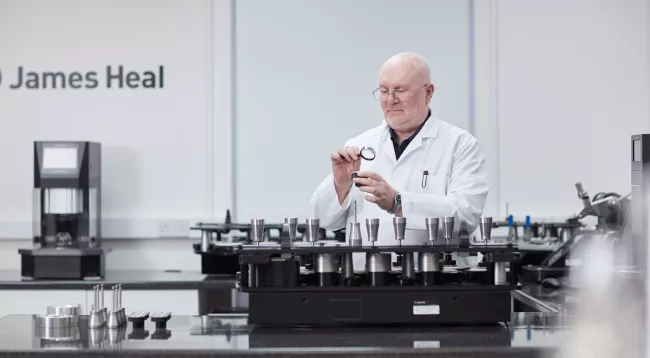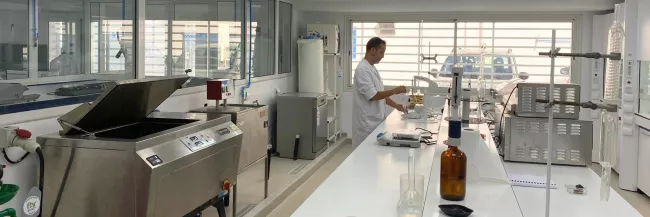As part of our 'Essentials' series, we explore the core areas of textile testing and feature the instruments, test materials, and test methods within them, sharing our expertise and advice for best practices to maximise your efficiency. In this article, we explain how to use multifibre, for accurate and repeatable results.
What is Multifibre and what is it for?
Multifibre is used as the adjacent fabric in many colour fastness tests, to assess the colour transfer of materials. These tests are typically those such as:
- Colour fastness to washing
- Dry cleaning
- Water
- Perspiration, and many others.
During colour fastness tests, the resistance of a fabric to change in any of its colour characteristics and the transfer of its colour(s) is determined using adjacent fabrics and materials.
Multifibre is one of the most common types of adjacent fabrics, made of yarns of various generic kinds of fibres, each of which forms a strip of at least 15mm width providing even thickness of fabric.
Adjacent fabrics are basically undyed fabrics made of one or several fibre types, used to determine staining/colour change in fastness tests. In order to be effective and produce reliable results, adjacent fabrics must be free of all finishes and residues.
Types of Multifibre Adjacent Fabric
At James Heal, we manufacture the main types of multifibre in-house: Multifibre DW and Multifibre LW. The fabric composition is compliant with the requirements of ISO 105 F10 and approved by Marks and Spencer, Next and many other UK and European specifiers. Multifibre DW complies with ISO 105-F10. It consists of individual strips of the following components:
- Diacetate
- Bleached Cotton
- Polyamide
- Polyester
- Acrylic
- Wool
Multifibre LW is approved by Marks & Spencer and complies with C3. It consists of individual strips of the following components:
- Regenerated Cellulose
- Bleached Cotton
- Polyamide
- Polyester
- Acrylic
- Wool


What is the difference between Multifibre DW and Multifibre LW?
The key difference is in strip 1, because Multifibre LW contains regenerated cellulose instead of diacetate. This is because it is considered to have more relevance to fibres used in modern apparel fabrics.
How to identify Multifibre DW and Multifibre LW
To aid identification between the two, Multifibre LW has a black thread in the selvedge.
Regenerated cellulose is more relevant than Acetate to the fibres commonly found in current apparel fabrics. We have added a thoroughly tested colourfast identification strip into the selvedge of our Multifibre LW to aid stock identification.
Common standards and test methods
The most common standard is ISO 105-F09, are there are two standardised multifibre adjacent fabrics:
- Type DW (Diacetate-Wool): This contains cellulose diacetate, bleached cotton, polyamide, polyester, acrylic, wool
- Type TV (Triacetate-Viscose): This contains cellulose triacetate, bleached cotton, polyamide, polyester, acrylic, viscose
When multifibre adjacent fabric is used, no other adjacent fabric may be present, as this can affect the degree of staining of the multifibre fabric. When a multifibre adjacent fabric is used, it should be of the same dimensions as the specimen under test (normally 40 mm √ó 100 mm). As a general principle, it needs to cover the face side of the specimen.
How to determine test results with multifibre
Colour fastness test results are determined by a visual comparison under specific lighting and viewing conditions. Here, we assess the difference in colour (or contrast) between an untreated/unstained and a treated/stained specimen. The differences are represented on a Grey Scale to assess the colour change.












